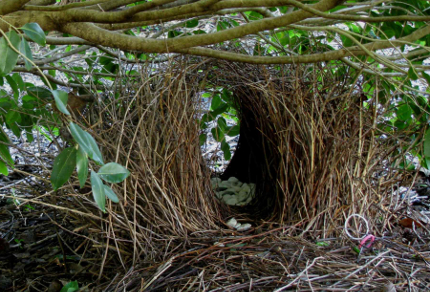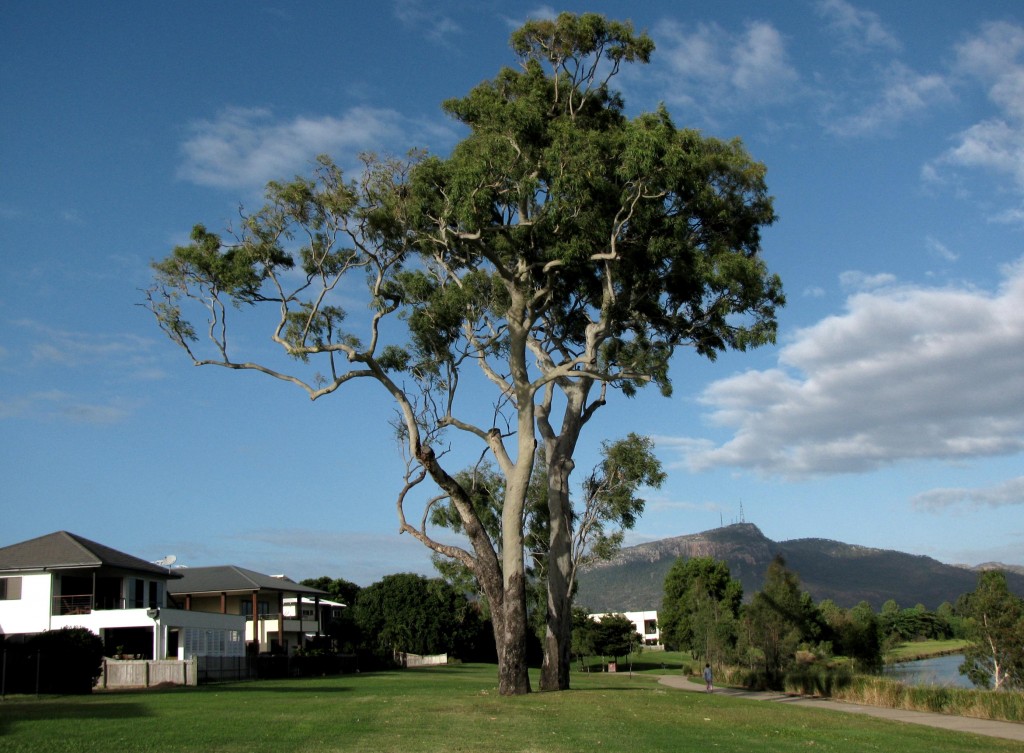
Magpie Carolling Gums in Idalia, Townsville (© Magi Nams)
In the Ross River Parkway in Idalia, Australian magpies carolled loudly from atop a pair of tall gums that tossed twisted, kinked branches against the sky. Welcome swallows performed an avian Ballet of the Hunt above the river and adjacent lawns. A great egret flapped majestically over the water, while yellow honeyeaters flitted among the branches of shoreline shrubs as though playing tag. A great bowerbird emitted harsh hisses and skulked near its avenue bower sheltered beneath the spreading boughs of a small tree.
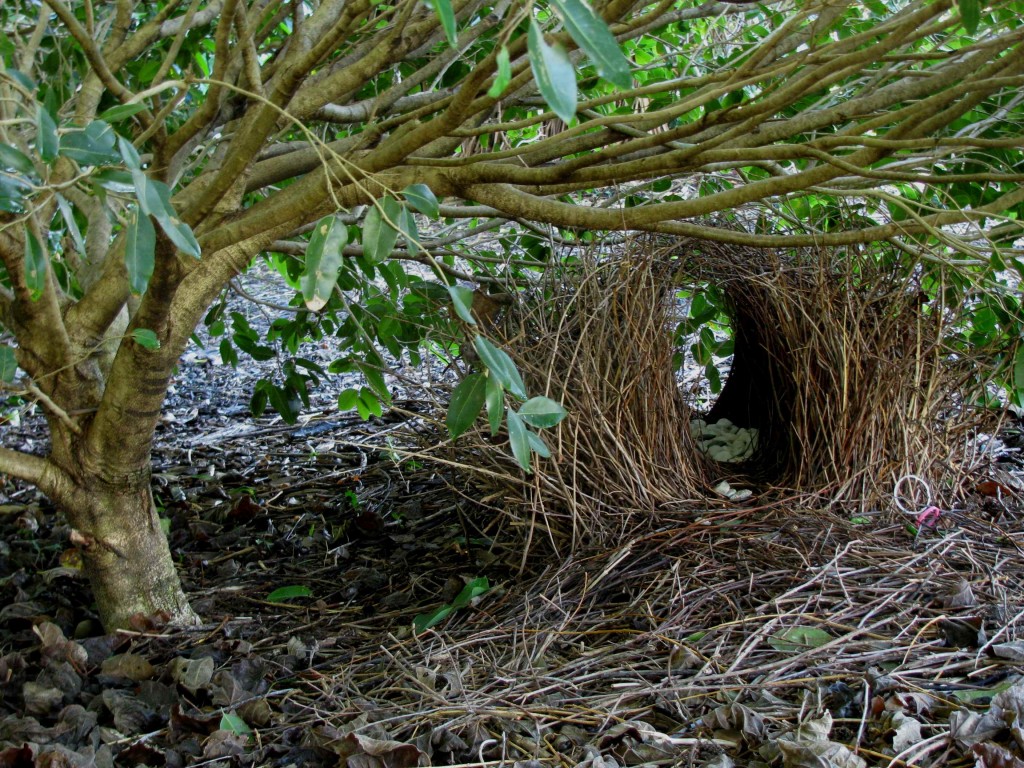
Great Bowerbird Bower (© Magi Nams)
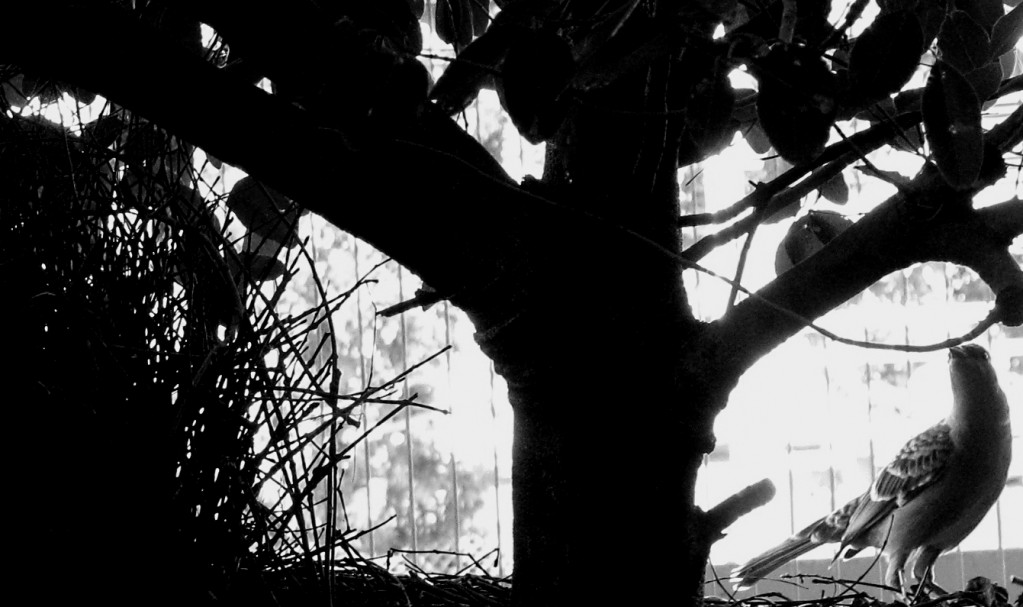
Great Bowerbird at Bower (© Magi Nams)

Bower Decorations (© Magi Nams)
Within the bower, white landscaping stones were piled as decorations, topped by a few green leaves. These, plus bits of pink and white plastic and green seeds placed outside the avenue act as enticements for female bowerbirds to inspect the bower. If a female is impressed with the bower, she’ll mate with the male inside the avenue.

Great Bowerbird Avenue Bower with Decorations (© Magi Nams)
The male must guard his bower from other males that are bent on stealing his decorations to spiff up their own bowers. I’ve seen raiders in action, flying away from a bower I know in Railway Estates with ornaments in their beaks. Last Friday, when I first noticed this bower, two bowerbirds were amicably present at it, leading me to conclude that one was a female checking out the bower’s merits.
Australia is home to 8 species of bowerbirds, 6 of which construct avenue bowers. These are the regent, satin, fawn-breasted, western, spotted, and great bowerbirds. The male tooth-billed bowerbird displays at a court decorated with leaves, while the golden bowerbird, which is the smallest bowerbird species, constructs the largest bower of any Aussie bowerbird, a ‘maypole’ consisting of twigs piled up around the bases of two saplings, with a decorated display perch positioned between the twig piles.1 According to members of the Townsville Region Bird Observers Club, the golden bowerbird occurs in the rainforests of Paluma Range National Park north of Townsville, as do the satin and tooth-billed bowerbirds. It’s my unbelievable good fortune that Vilis’s sabbatical has brought us to a location where I’m within easy reach of bowerbird species that bird lovers travel the world to see.
Today’s birds: blue-faced honeyeaters, magpie-larks, msked lapwings, mynas, brown honeyeaters, rainbow lorikeets, yellow honeyeaters, peaceful doves, welcome swallows, galahs, sulphur-crested cockatoos, Australian magpies, great egret, leaden flycatchers, great bowerbirds, spangled drongo, mangrove gerygone, little corellas, white-throated honeyeater, Australian white ibises, willie wagtail, Nankeen kestrel, nutmeg mannikins, rainbow bee-eaters, Australian (Richard’s) pipit, Torresian crow, green figbird, white-gaped honeyeater, white-breasted woodswallows. Also, two agile wallabies foraging in tidal lagoon grasses.
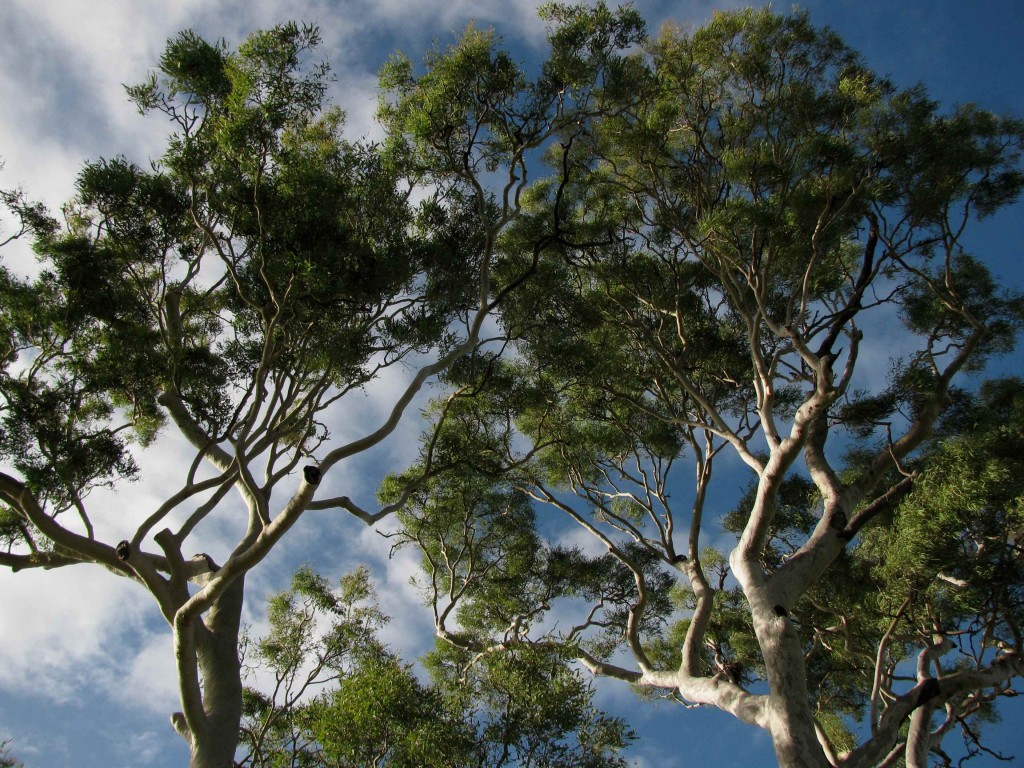
Carolling Gums and Sky (© Magi Nams)
Reference:
1. Graham Pizzy and Frank Knight. The Field Guide to the Birds of Australia. 1997. Angus & Robertson, Sydney. pp. 476-480.

